|
We also have a brand new chapter on the medical anthropology of tattooing in the Oxford Handbook of the Archaeology and Anthropology of Body Modification. This was co-authored with former graduate student Michael Smetana. Mike wrote the first draft for a course, and I slogged away on the rest of it over the course of a year or two. Marco Samadelli wrote a short summary and didn't have time to write a full chapter, so they asked me to combine his chapter with ours. I'm quite pleased with it, though I've already found a few things that will need to be fixed if they retain it for future editions. Check it out here.
0 Comments
Saturday, June 30, 2023During week two of summer fieldwork in Samoa, while we waited for other team members to conduct the free-listing activity with participants on other islands, we reconnected with friends and colleagues and took in the sites of Upolu. In may seem indulgent when we're here to conduct research, but you have to understand the place you are. Tourist attractions are prepackaged ways of knowing that help with a quick but visceral gloss of a place, and my research assistants had never been to Samoa. Grant wanted to see a Samoan beach, so I took him to the one in Apia by Palolo Deep Marine Reserve and remembered my snorkeling equipment this year (I forgot them when I was here in 2019). Samoan beaches are pretty rocky, so they have fales set up for folks to hang out at, and there are a lot of families eating, drinking, swimming, and being merry. I see an island at a distance that I think it will be fun and easy to swim to with fins on. The coral on the way out was gorgeous. It's one of the two best snorkeling sites I've been to in the Samoan Islands, but I have only been to a handful of spots. It turns out the island is further away than it looks, and I was exhausted by about halfway there. Not sure if it was wise to proceed but really wanting to say I'd swum out to it, I kept going. When I arrived, I literally dragged myself up onto what is essentially a mound of broken coral and plastic bottles, pull off my mask and fins, and flopped onto my back while I regained some strength. My mask nearly floated away as the tide changed while I was there, which would have been something of a disaster. Getting back wasn't as difficult, but I found that Grant had tried the same thing. Instead of continuing however, he had more wisely turned back but got carried by the current away from the beach and ended up emerging on the coast road and walking back to the beach. Then Grant made a drunk friend, while I rested after doing myself in with that swim. Sunday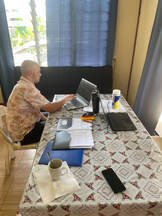 Research assistant Grant Pethel catching up on his field notes on Sunday. Research assistant Grant Pethel catching up on his field notes on Sunday. On Sunday, my friend and colleague Dr. Jessica Hardin from Rochester Institute of Technology came into town. Jessica is a medical and cultural anthropologist, and she was wrapping up a Fulbright in New Zealand and coming through Samoa to set up a new project. Jessica studies cardiovascular and metabolic health among Pentecostals in Samoa, among other topics. We share research interests in Pentecostalism, Samoa, and health, so we always have a lot to talk about. Among other things, she has worked in Samoa for several years longer and more intensively than me, and we run in overlapping circles so I love to get her perspective on my Samoan experiences as much as I can, as I've probably said before. It was Jessica who recommended I make a visit to Samoa in advance of the field season and give a seminar talk if possible. It's both difficult to set up a field site with an 18-hour time difference regardless of internet and zoom availability and also not a particularly sensitive approach. I have had to modify my budget and make some cuts elsewhere to accommodate the short trip, but it was definitely important in making this summer field season possible.  Dinner in Apia with Dr. Jessica Hardin (center) and Grant Pethel (right). Dinner in Apia with Dr. Jessica Hardin (center) and Grant Pethel (right). After dinner with Jessica on Sunday, we picked up Josh Lockhart from the airport, another UA research assistant who had just arrived. We ate some old tuna sandwiches that were the only food left for sale when the other vendors shut down, and I paid for that rookie mistake for a few days. Monday and Tuesday On Monday I was literally laid out. Josh slept for a long time too and was exhausted from travel. He had already been on the road for a month, so he relaxed and did laundry. Grant explored the neighborhood for several hours. Tuesday was not much better, but we went into town to show Josh around and get groceries. Wednesday RLS's house and front yard. I took this photo when I hiked to his grave in March 2023. RLS's house and front yard. I took this photo when I hiked to his grave in March 2023. Wednesday was July 4 in Samoa. July 4 is a national holiday (Independence Day) in the United States, but of course it's not Samoa's independence day, and Samoa is 18 hours ahead of me in Alabama, so it was still July 3 there anyway. Grant made a gesture to our shared national holiday via a Pethel family tradition by wearing a 4th of July 2023 shirt from the Gap. We went to visit Sliding Rock, which is owned by our collaborator Dr. Bernadette Samau's family, but without Bernie in town, we just checked out the view. I'll return when I can go with Bernie. Next we went to the Robert Louis Stevenson Museum, which I'd almost missed previously by trying to go on Sunday. This time we got the house tour. The RLS story in Samoa is really interesting, and I recommend checking it out. On previous visits, I'd always marveled at how they buried RLS atop Mount Vaea, which is a heckuva hike even today on maintained trails. Samoans bury family members in front of their houses on family land, so they are always nearby. Obviously RLS was not Samoan and wasn't interested in following their burial practices, but he was Scottish and is buried in Samoa, not Scotland. In fact, the reality is that RLS seems to have been rich enough in Treasure Island and Kidnapped money to afford his extensive travels around the world, including stops in Hawaii to hang out with King Kalakaua, which I saw a photo of last year in the Iolani Palace in Honolulu, and to have all the wood shipped in that he used to build his giant house on a large and magnificent piece of land overlooking Apia Harbor. He had tuberculosis and was looking for somewhere to settle and write that would be easier on his health, so this long trip included months-long stop-overs while he decided where to settle.
Thursday Grant Pethel's phone eats first at Phat Burger. Grant Pethel's phone eats first at Phat Burger. Thursday, we had one meeting at the Centre for Samoan Studies (CSS) at the National University of Samoa (NUS), lunch at Phat Burger, and drove to the other side of the island to show Josh around and walked out to the Coastal Walkway in O Le Pupu Rue National Park. CSS is our academic liaison in Samoa, and we have a Letter of Understanding that outlines terms of collaborative exchange between our institutions (mine being the University of Alabama). Our primary liaison is Samoan cultural anthropologist Dionne Fonoti, who is a true blessing to work with. We spend a lot of time while we are there talking to Dionne and archaeologist Greg Jackmond about their projects and looking at Greg's LiDAR maps of Samoa (which I would happily share for researchers to explore because someone forgot to fill out the form to renew the domain). They have masses of fascinating but unprocessed data and hundreds of research projects needing to be conducted as people develop lands and erase the past. I have put out calls in my networks and continue to seek colleagues and students motivated by this kind of work to join our team and work with me in Samoa. Friday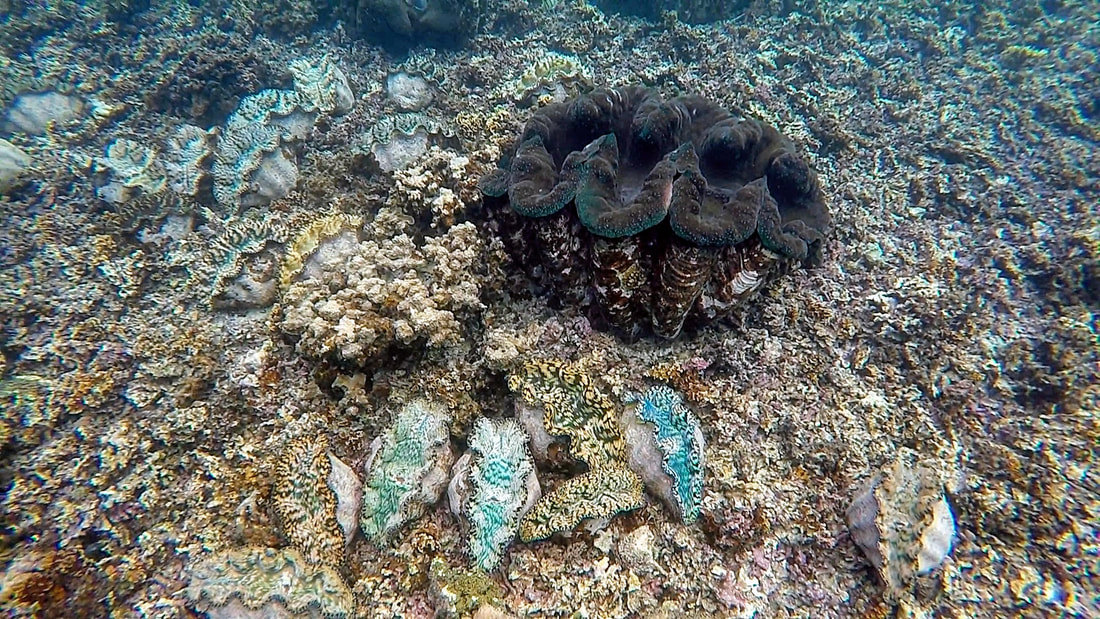 "Big and little giant clams Samoa" by amanderson2 is licensed under CC BY 2.0. "Big and little giant clams Samoa" by amanderson2 is licensed under CC BY 2.0. On Friday we went snorkeling over giant clams. This was very confusing because several websites say the giant clam sanctuary is in Savai'i, but Google maps indicated that there is a giant clam sanctuary in Savaia, which is spelled similar so I was unsure which was accurate. Possibly both. We drove out there with our snorkeling stuff and found a guy sitting in a fale (Samoan gazebo) next to a sign about clams. Villages control such sites, and money collected is for the village to maintain sites. In this case, the clam sanctuary is a place where they reseeded the ancient clam beds. In the photos below, there is one where you can see buoyed ropes with a flag sticking up. That is where we were directed to snorkel. It is lovely and tranquil snorkeling out there, with pretty fish here and there and bright blue starfish there and here. Then you cross the rope and start seeing the most amazing creatures. The clams are beautiful and mesmerizing in their color and dynamism for being relatively stationary. We thought we'd seen the most beautiful and amazing sea creatures even until we swam a little further and actually reached the flags. The giant clams are truly giant, and they are also truly the most magnificent sea creatures I have ever seen. I wish I'd had an underwater camera with me because I hate plucking photos from the internet, but you need to see this. Swimming around, there are cages of small clams, and you can see how they stay in the cages for protection as they grow, then they are moved to spots where they can root. Giant clams are part plant and part animal, with photosynthesis taking place while they attract microorganisms and stuff to eat as well. Super weird and cool. And now I understand the myth of how tatau came to Samoa. It's a weird story about conjoined twin goddesses swimming down to a giant clam, getting stuck, then getting confused when they escaped and giving the tatau tools to the wrong gender (they were originally intended for women). Like many myths, it is incredible, seemingly unrealistic, and exists in myriad variations so one doesn't think much of the veracity of the story. But now I can see how one could definitely get stuck in a giant clam. We were careful not to stick any limbs inside because if they close, it would be difficult to get out and likely result in drowning. Saturday Me, Eddie "Kaki" Danielson, and Mike Smetana after the closing ceremony of the Tatau exhibit at the Bishop Museum, July 2, 2022. Me, Eddie "Kaki" Danielson, and Mike Smetana after the closing ceremony of the Tatau exhibit at the Bishop Museum, July 2, 2022. On the weekend, we didn't do much except data cleaning. Most of the work during this period involved compiling the free-listed terms as they were collected. Many terms are similar concepts, but they were in Samoan, so would meet with Leota and go over the words. He translated them for us and helped us decide when words were basically the same meaning and which to choose. This is complicated in one's native language (as Leota experienced), but it's worsened when one doesn't know the language. I've never been particularly good at picking up other languages, but I have been learning Samoan slowly and completely on my own. There are no apps or software for Samoan. I have found resources online, and Eddie Danielson, a Samoan language instructor at the University of Hawaii and toso (skin stretcher/assistant) for Su'a Peter Sulu'ape who I met last year, gave me some suggestions on how to train myself. I made index cards to memorize terms and develop a lexicon this summer, which we tested each other on when we were in the car. So we spent part of the day cleaning our data, cleaning up, doing laundry, etc. I took a shower, and as I was toweling off, I started feeling itchy all over. I discovered sugar ants covering my towel and biting me all over. Why do ants love to attack me? Oy vey. I have three scars from fire ants stings on my legs that have become infected and get repeatedly attacked by fire ants in my yard in Alabama. I discovered a trail of them coming in my bedroom window and had had my towel drying on the curtain rod. I went a little ham on the ants on that wall. Later we made up for my attack on another organism by allowing a stray cat to adopt us (stray dogs and cats are everywhere) and naming another gecko we recognized as a regular visitor. Grant named them. I think this was Bob. We finally asked our hosts how to work the TV they'd recently installed and looked to see if we could work on our Samoan language skills via local programming. The only thing we could find to work with was an extended Bluebird Hardware commercial that plays over and over and news occasionally, but most programming came from New Zealand. Josh and I found some classic Samoan rugby matches to watch to satisfy our sports cravings. SundayAgain, on Sunday not much is open besides corner stores until after 5 pm. But after that, the Sogi neighborhood by the Fono has restaurants (and churches) that are open and very active and serving alcohol (the restaurants, not the churches) because there are very few people who live there.
We learned that from Jessica a week earlier and saw her again there right before she went home to New York (she'd been staying in the hotel the restaurant is in). The Fono is where the representative chiefs from throughout Samoa meet to delegate and is the attempt by colonizers to centralize Samoan government while maintaining the traditional chief-based village governmental structure. The building looks like a giant fale, but has walls due to the secrecy needed for frank and honest delegation.  I was impressed with the Polynesian Cultural Center. It seems like a cultural Disneyland, but it's owned by the Mormon Church and staffed by Brigham Young University students. So on the one hand, we expected the cheesiness that apparently appeals to tourist; but on the other hand, we expected religious messaging to mar the presentation. I was impressed with the limited amount of cheese and the complete lack of religious messaging anywhere that I could detect. What I know about Mormonism comes from Rob Ruck's book The Tropic of Football: The Long and Perilous Journey of Samoans in the NFL and Arthur Conan Doyle's A Study in Scarlet. Of course the first is recent non-fiction, while the latter is an old fiction book. But the upshot is that Mormonism doesn't operate the way Christianity does. I've known a lot of Mormons because of their missionary style. My impression is that they go abroad to do service work and set an example but do not actively convert. So a lot of folks like the cultural experience and go into anthropology. A Mormon kid we met had the pule tattoo, which he'd received to settle him down apparently, and he told us that Mormons don't prohibit tattoos. They usually advise against them, but they are OK with cultural tattoos, which is what they consider Samoan tattooing. This is different than what Samoan Mormon kids in American Samoa who accompanied a non-Mormon friend to get tattooed, but I haven't checked this anywhere else.  Thanks to Chris (middle) and his wife Patricia (not pictured) for hooking us up! Thanks to Chris (middle) and his wife Patricia (not pictured) for hooking us up! The great thing for us about the PCC is that we were looking for Samoans to interview, and the easiest way to identity Samoans in Hawaii without just asking (which can be weird and potentially insulting for a variety of reasons) is to go to the Samoan Island exhibit at PCC because each cultural island is staffed by students from that island. The catch is that PCC is expensive, and we didn't want to pay to go in and look for people to interview, especially since we were skeptical of this tactic at first. So we went back and forth between the main entrance and BYU campus behind PCC looking for folks and kept getting steered by to PCC. Finally, we went in and stopped by the kiosk owned by friends of Tricia Allen (more on her later), who promptly offered to comp us in for both the park and the evening show (this happened again later in the month when I returned with my wife--we arrived with malasadas the second time, but the effect was the same--having connections is the best!). |
Christopher D. LynnI am a Professor of Anthropology at the University of Alabama with expertise in biocultural medical anthropology. Archives
May 2023
Categories
All
|



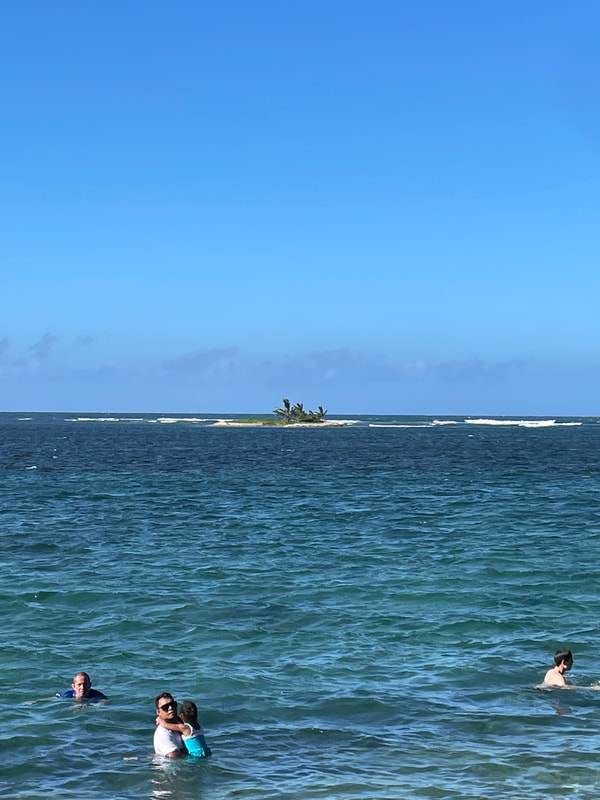





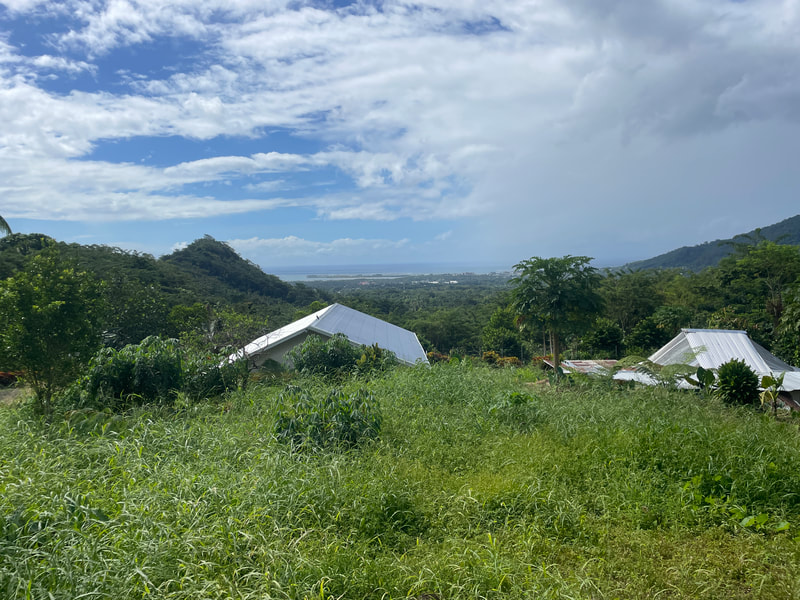

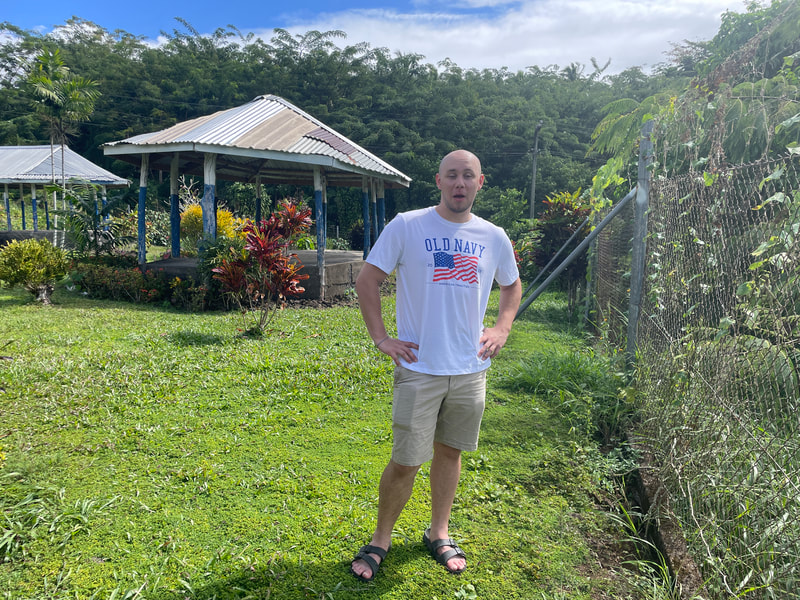
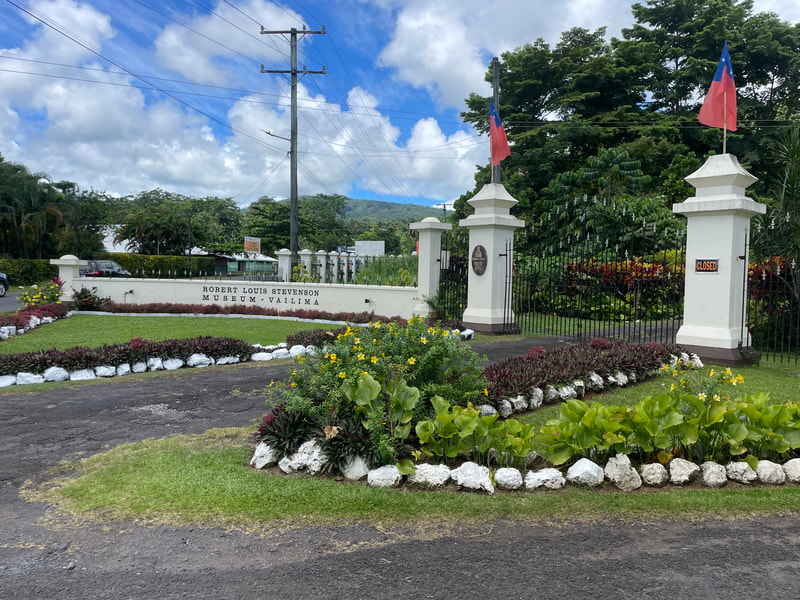





















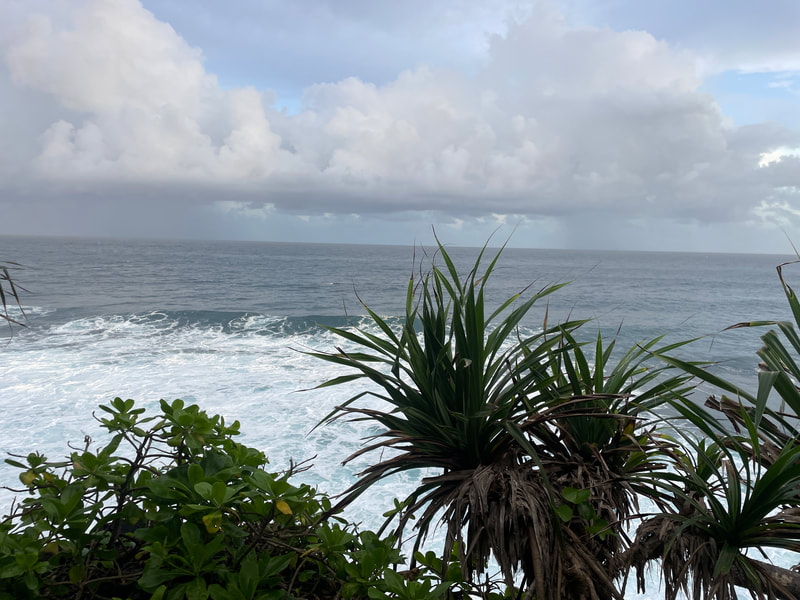


















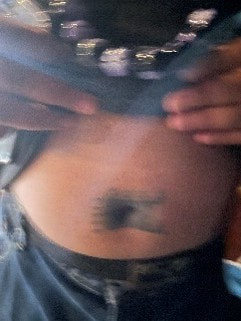
 RSS Feed
RSS Feed
